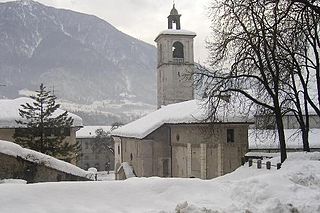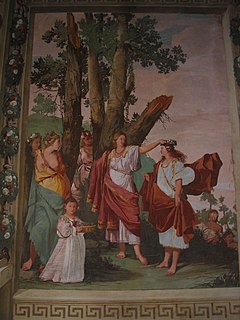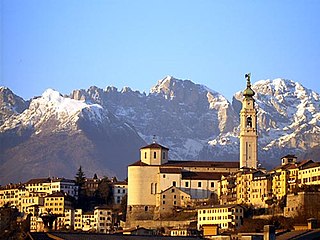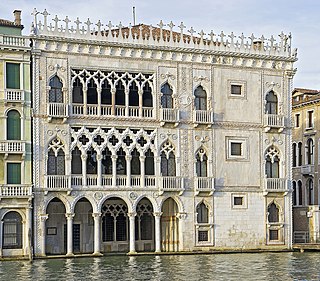
Simone Martini was an Italian painter born in Siena. He was a major figure in the development of early Italian painting and greatly influenced the development of the International Gothic style.

Morto da Feltre was an Italian painter of the Venetian school who worked at the close of the 15th century and beginning of the 16th.

Feltre is a town and comune of the province of Belluno in Veneto, northern Italy. A hill town in the southern reaches of the province, it is located on the Stizzon River, about 4 kilometres from its junction with the Piave, and 20 km (12 mi) southwest from Belluno. The Dolomites loom to the north of the town.

Pellegrino Tibaldi, also known as Pellegrino di Tibaldo de Pellegrini, was an Italian mannerist architect, sculptor, and mural painter.

Antoniazzo Romano, born Antonio di Benedetto Aquilo degli Aquili was an Italian Early Renaissance painter, the leading figure of the Roman school during the 15th century.

Giulio Carpioni was an Italian painter and etcher of the early Baroque era.

Francesco Trevisani was an Italian painter, active in the period called either early Rococo or late Baroque (barochetto).

Gaspare Diziani was an Italian painter of the late-Baroque or Roccoco period, active mainly in the Veneto but also in Dresden and Munich.

Italian Renaissance painting is the painting of the period beginning in the late 13th century and flourishing from the early 15th to late 16th centuries, occurring in the Italian peninsula, which was at that time divided into many political states, some independent but others controlled by external powers. The painters of Renaissance Italy, although often attached to particular courts and with loyalties to particular towns, nonetheless wandered the length and breadth of Italy, often occupying a diplomatic status and disseminating artistic and philosophical ideas.
Francesco Ruviali was an Italian painter of the Renaissance period.

Michele di Matteo, also sometimes used with further qualifications of da Bologna or Lambertini was an Italian painter of the late Gothic period in Bologna.

Ippolito Caffi (1809–1866) was an Italian painter of architectural subjects and seascapes or urban vedute.
Fra Simone da Carnuli was an Italian (Genoese) painter. He was a Franciscan friar of Genoa. He painted several pictures for his convent, two of which are dated 1519, representing the Last Supper and Preaching of St. Anthony. He painted architectural designs and bird's-eye views with figures seen from an aerial perspective.
Franco Bolognese was an Italian painter, active as a miniature painter (illuminator).

Ferdinando Cavalleri (1794–1867) was an Italian painter, specializing in history subjects and portrait, active in a Neoclassical-style.
Matteo Cesa or de Cesa was a late-gothic style artist living at Belluno. He shows the influence of painters of the Vivarini clan. His son, Antonio, was also a painter.

Simone di Filippo Benvenuti, known as Simone dei Crocifissi or Simone da Bologna, was an Italian painter. Born and dead in Bologna, he painted many religious panel paintings, and also frescoes in the churches of Santo Stefano and San Michele in Bosco, both at Bologna.

The Civic Museum of Palazzo Mosca is the main civic museum of Pesaro, displaying art and decorative works, located in Piazza Mosca in this town of the region of the Marche, Italy.
The public domain consists of all the creative works to which no exclusive intellectual property rights apply. Those rights may have expired, been forfeited, expressly waived, or may be inapplicable.

Michael Bryan was an English art historian, art dealer and connoisseur. He was involved in the purchase and resale of the great French Orleans Collection of art, selling it on to a British syndicate, and owned a fashionable art gallery in Savile Row, London. His book, Biographical and Critical Dictionary of Painters and Engravers, first published in 1813-16, was a standard reference work throughout the 19th century, and was last republished in 1920; however it is now badly outdated.

















